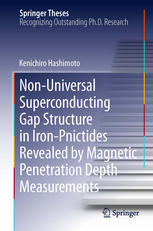

Most ebook files are in PDF format, so you can easily read them using various software such as Foxit Reader or directly on the Google Chrome browser.
Some ebook files are released by publishers in other formats such as .awz, .mobi, .epub, .fb2, etc. You may need to install specific software to read these formats on mobile/PC, such as Calibre.
Please read the tutorial at this link: https://ebookbell.com/faq
We offer FREE conversion to the popular formats you request; however, this may take some time. Therefore, right after payment, please email us, and we will try to provide the service as quickly as possible.
For some exceptional file formats or broken links (if any), please refrain from opening any disputes. Instead, email us first, and we will try to assist within a maximum of 6 hours.
EbookBell Team

4.3
58 reviewsIn this book the author presents two important findings revealed by high-precision magnetic penetration depth measurements in iron-based superconductors which exhibit high-transition temperature superconductivity up to 55 K: one is the fact that the superconducting gap structure in iron-based superconductors depends on a detailed electronic structure of individual materials, and the other is the first strong evidence for the presence of a quantum critical point (QCP) beneath the superconducting dome of iron-based superconductors.
The magnetic penetration depth is a powerful probe to elucidate the superconducting gap structure which is intimately related to the pairing mechanism of superconductivity. The author discusses the possible gap structure of individual iron-based superconductors by comparing the gap structure obtained from the penetration depth measurements with theoretical predictions, indicating that the non-universal superconducting gap structure in iron-pnictides can be interpreted in the framework of A1g symmetry. This result imposes a strong constraint on the pairing mechanism of iron-based superconductors.
The author also shows clear evidence for the quantum criticality inside the superconducting dome from the absolute zero-temperature penetration depth measurements as a function of chemical composition. A sharp peak of the penetration depth at a certain composition demonstrates pronounced quantum fluctuations associated with the QCP, which separates two distinct superconducting phases. This gives the first convincing signature of a second-order quantum phase transition deep inside the superconducting dome, which may address a key question on the general phase diagram of unconventional superconductivity in the vicinity of a QCP.